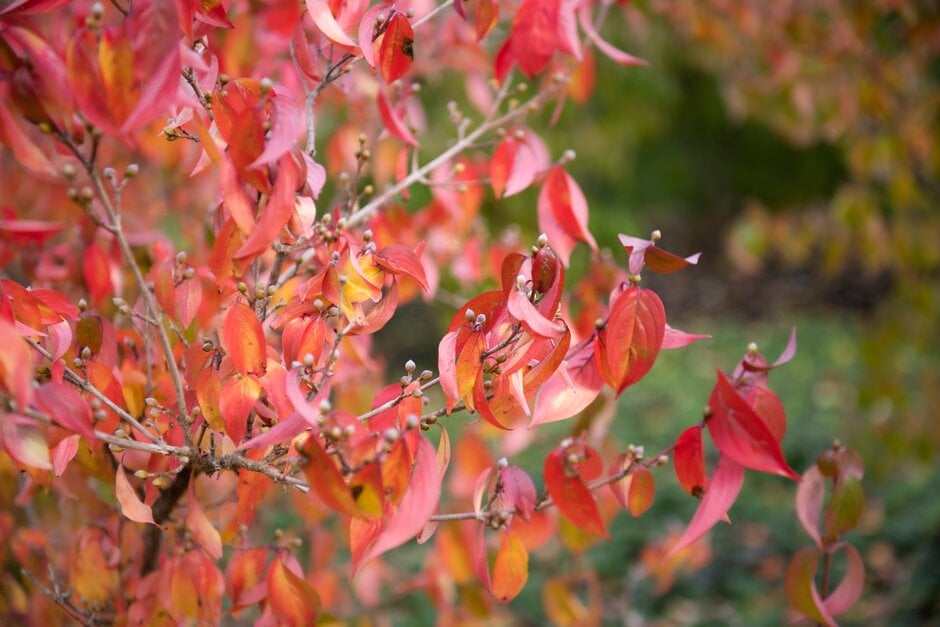Cornus officinalis
Japanese cornelian cherry
A vigorous spreading shrub with rough, flaking brown bark and ovate dark green leaves turning red-purple in autumn. Yellow flowers are produced in in loose umbels, 2cm across, in late winter before the leaves open. They are followed by edible bright-red fruits
Size
Ultimate height
4–8 metresTime to ultimate height
5–10 yearsUltimate spread
4–8 metresGrowing conditions
Moisture
Moist but well–drained, Well–drainedpH
Acid, NeutralColour & scent
| Stem | Flower | Foliage | Fruit | |
| Spring | Yellow | Green | ||
|---|---|---|---|---|
| Summer | Green | |||
| Autumn | Purple Red | Red | ||
| Winter | Yellow |
Position
- Full sun
- Partial shade
Aspect
South–facing or West–facing or East–facing
Exposure
Exposed or Sheltered Hardiness
H6Botanical details
- Family
- Cornaceae
- Native to GB / Ireland
- No
- Foliage
- Deciduous
- Habit
- Bushy
- Genus
Cornus can be deciduous shrubs or trees, or creeping, woody-based perennials, some with brightly coloured young stems. Tiny flowers are borne in dense clusters, sometimes with showy bracts. Many have fine autumn colour
- Name status
Correct
- Plant range
- China
How to grow
Cultivation
Tolerant of a range of soils and locations but best in fertile, humus-rich well-drained neutral to acid soil in full sun or part shade. For more advice, see flowering dogwood cultivation
Propagation
Propagate by seed in autumn or stratify and sow in spring or propagate by semi-hardwood cuttings in summer
Suggested planting locations and garden types
- Cottage and informal garden
Pruning
Pests
Generally pest-free but may be susceptible to horse chestnut scale
Diseases
May be susceptible to cornus anthracnose and honey fungus
Get involved
The Royal Horticultural Society is the UK’s leading gardening charity. We aim to enrich everyone’s life through plants, and make the UK a greener and more beautiful place.
